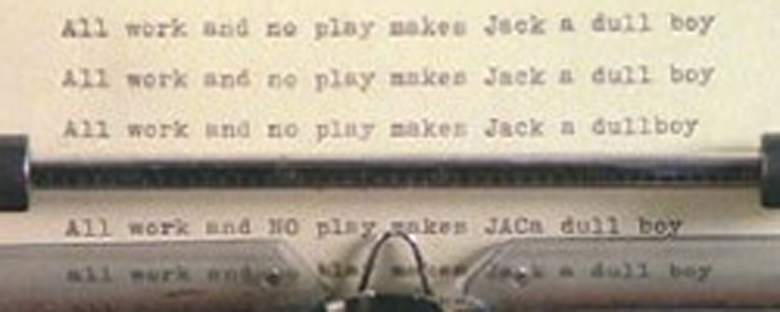Reviews
Stanley Kubrick
UK, 1980
Credits
Review by Leo Goldsmith
Posted on 29 October 2004
Source Cinemax
Related articles
features: October: 31 Days of Horror
If Stanley Kubrick’s The Shining is not the best haunted house movie ever made, it is certainly among the most intricately constructed. Renowned mostly for Jack Nicholson’s cartoonish outbursts and for its often traumatizing imagery, the film is yet another of Kubrick’s analyses of the effects of a system on the mind and humanity of the individual. In The Shining, the system is an architectural one, and the individual a weak and pliant figure, emasculated by his failures as a husband, father, and writer.
In adapting Stephen King’s equally horrifying novel, Kubrick wisely excluded some of the more preposterous elements (such as the murderous topiary) and made the story entirely his own, incorporating it into his obsessive, systematic body of work. Kubrick regulars György Ligeti and Wendy Carlos provide a semi-intellectual reading of a typical horror movie score, and once again the intricacies of the production design correlate with the complex structures of the script, with the maze-like circuitry of the Overlook Hotel’s corridors that mirror the protagonist’s descent into madness.
The Shining is also characteristic of Kubrick’s visual style. John Alcott’s cinematography emphasizes Renaissance perspective with consistent zooming and symmetrical compositions, and with the pioneering use of the steadicam. These formal aspects suggest that the camera itself has a perspective, that it is an authorial eye that watches over—or “Overlook”’s—the action.
This pervasive deliberation and sense of control in the film’s narration and acting is the aspect of Kubrick’s style that many viewers find hardest to tolerate. The maddeningly rigorous adherence to shot-reverse shot editing of dialogue, the dispassionate performances, and the unconcealed exposition in the early part of the film (the maze, the Indian burial ground) make the film appear to be one large deus ex machina. As Jack Torrance says to his wife, “It was as if I knew what was around every corner.” (He then imitates spooky horror-movie music.)
In fact, these characteristic Kubrick elements would seem to better suit horror than another genre. Horror film audiences are accustomed to thinking of film characters as idiots who brashly ignore countless warnings of impending doom. And while the characters of this film are not arrogant teens entering an old haunted house, there is an air of determinism that structures the film and makes its truly macabre tableaux—creepy twins, elderly full frontal, oceans of blood, Nicholson’s eyebrows—that much more shocking.
We don’t do comments anymore, but you may contact us here or find us on Twitter or Facebook.



